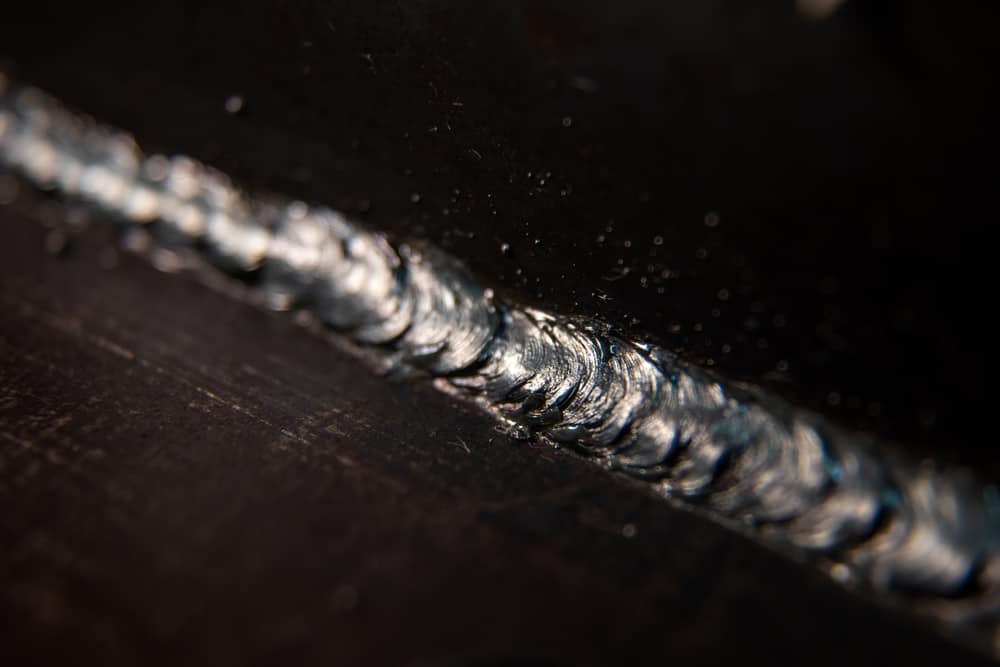
In most cases, welders would prefer to weld closely-related metals because welding dissimilar metals increases the possibility of inconsistencies. In many applications, though, different metals must be welded. Two common scenarios for welding dissimilar metals include:
- When two components must be attached: for instance, plant pipes attached to tanks or valves.
- To counter strength, ductility, and temperature issues, which may not be possible with either metal solely.
However, achieving a high-quality, reliable weld when welding dissimilar metals can be immensely challenging. All welding preparation procedures should be followed to avoid defects and ensure a high-quality weld. This article will examine these preparatory steps and provide general guidance for GTAW welding dissimilar metals.
Gas Tungsten Arc Welding for Dissimilar Metals
Selecting an optimal welding process when welding dissimilar metals is crucial. Consider the factors described below before connecting the two metal pieces:
- Coefficient of thermal expansion: Different metals change and expand in different ways relative to temperature changes. When welding, if the coefficient of thermal expansion of two metals has high variation, excessive stress is caused in the joint.
- Melting point: Because metals have different melting points, finding the correct temperature and filler metal can be difficult.
- Solubility: Forming a strong bond requires combining metals with similar metallic solubility and interoperability. When the properties of the metals differ drastically, an additional metal sharing soluble properties with both metals can be used.
- Operational use: The application where dissimilar metals are used should also influence the metal selection and performance of the weld. For instance, high-temperature applications should not employ two metals with distinct heat-resistance capacities.
Across these challenges, the ideal welding process is GTAW. GTAW facilitates control over amperages and heat input during welding. This control, along with a faster weld, can reduce the size of the heat affected zone (HAZ) in both metals to preserve microstructural integrity. A concentrated arc of TIG can fuse unlike metals with precision to create a high-quality weld.
Next, let’s explore the different preparation work required for welding dissimilar metals.
Preparation for Welding Dissimilar Metals
Structural consistency and strength can be difficult to achieve when welding dissimilar metals. This is especially true in the transition zone, where intermetallic compounds may form that are prone to cracking and corrosion. Consequently, specific preparation work is required to ensure the resulting weld is free of defects and can provide adequate mechanical and metallurgical strength.
Additionally, preheat recommendations for each metal may vary. The chosen filler metal should be compatible, especially when welding heavier walls. It is also important that the metals used possess similar properties. This makes it easier for welders to set the weld parameters without compromising the quality of the joint. In cases where the metallic properties are drastically different, one can use a third metal with compatible solubility with both metals. This process is known as buttering.
Buttering On Dissimilar Metal Weld
Buttering refers to the deposition of a layer of welding metal onto the parent metals. The butter layer is chosen for its chemical compatibility with both metals. As a result, it can act as a transition layer to join the parent metals. For instance, in the power generation industry, the stellite alloy is generally used with valve seats. Direct welding of stellite with carbon forged valves will likely cause cracking and disrupt the operation.
Another advantage of buttering emerges when post-weld heat treatment is necessary. A buttering layer can be added to the metal that requires heat treatment. Once the buttered component is treated, it can be attached to another metal component, eliminating the final heat-treatment requirement.
Ensuring Dissimilar Metal Weld Quality
For applications that require joining dissimilar metals, it is necessary to consider factors like temperature limit, expansion rate, and corrosion resistance. Likewise, assessing the mechanical properties of various metals will help operators understand their compatibility and when a butter layer or filler metal may enhance the result. With GTAW, it is possible to perform a quality fusion of dissimilar welds. Adapting automation for buttering and subsequent welding can offer an ideal combination capable of producing defect-free welds.
Arc Machines, Inc. is a leading orbital welding solutions provider, with a range of welding machines and weld heads capable of welding dissimilar metals while saving costs. For inquiries regarding products, contact sales@arcmachines.com. For service inquiries, contact service@arcmachines.com. Arc Machines welcomes the opportunity to discuss your specific needs. Contact us to arrange a meeting.




